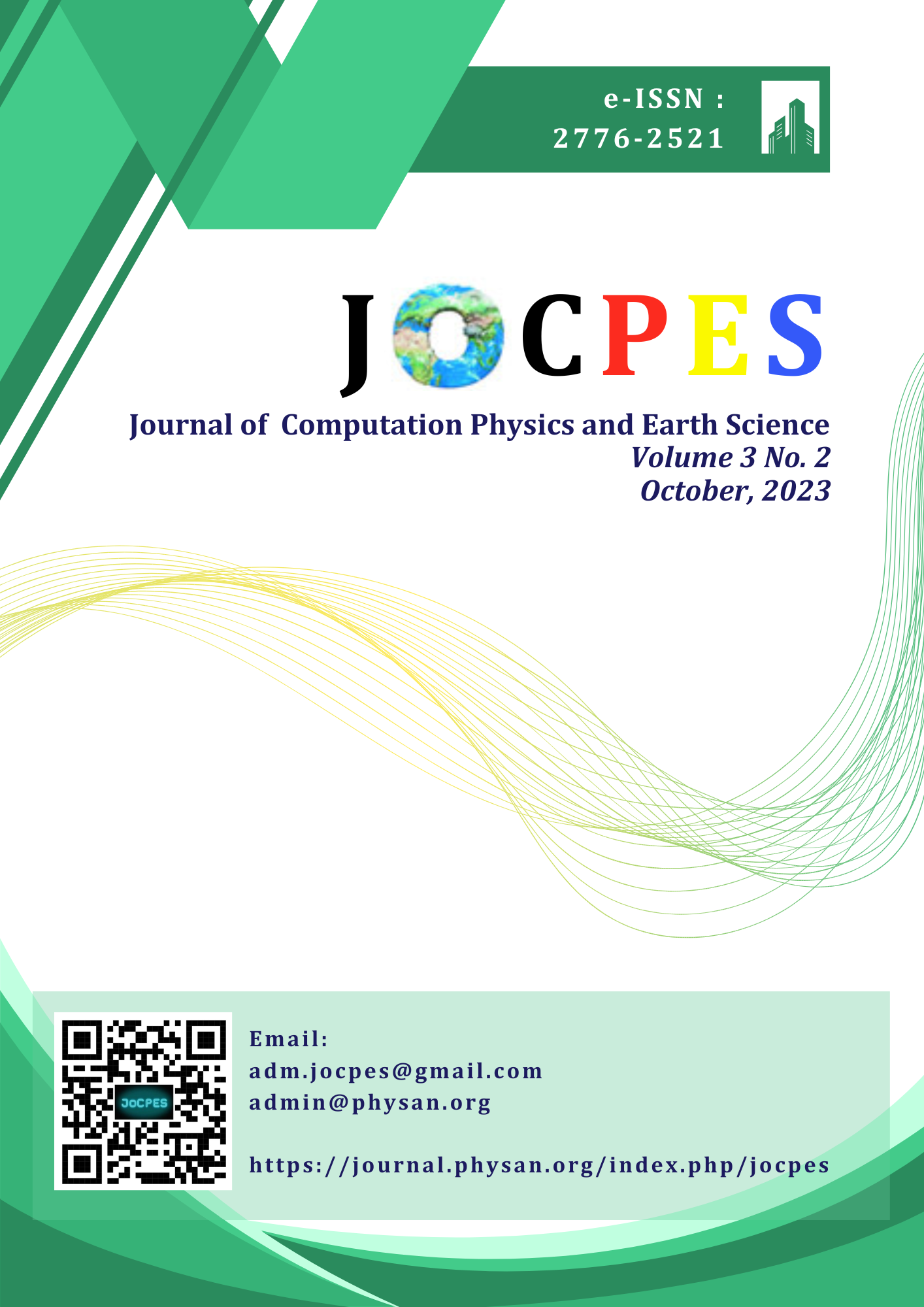Utilization of Himawari-9 and Radiosonde Weather Satellite Data in Heavy Rainfall Analysis(Case Study: Semarang, 14 March 2024)
Main Article Content
Abstract
The heavy rainfall event that hit Semarang City on 14 March 2024 caused flooding at several points. To understand the cause of this event, a comprehensive meteorological analysis is required. This research utilises Himawari-9 weather satellite data with RGB, day convective storm and 24-hour microphysics methods, as well as upper air observations using radiosonde at 12 UTC in the Semarang area. The use of this method is effective in knowing the atmospheric conditions in the Semarang area. The results of observations with the RGB method show cloud conditions that cause heavy rain with high intensity. Observations with the day convective storm method detect convective clouds that have the potential to cause heavy rain. The 24-hour microphysics method identifies High Cumulonimbus, Dense Cirrus, and Thick Cirrus cloud types that can cause heavy rain. Upper air observations with radiosonde at 12 UTC showed the early phase of severe weather in the Semarang area. The results of this study confirm the importance of satellite and radiosonde data integration in predicting and analysing heavy rain events for hydrometeorological disaster risk mitigation.
Downloads
References
A. H. A. Tarmizi, S. N. Rahmat, A. T. A. Karim, and N. N. A. Tukimat, “Climate change and its impact on rainfall,” Int. J. Integr. Eng., vol. 11, no. 1, pp. 170–177, 2019, doi: 10.30880/ijie.2019.11.01.020.
F. Xu, Z. He, Z. Sha, L. Zhuang, and W. Sun, “Assessing the Impact of Rainfall on Traffic Operation of Urban Road Network,” Procedia - Soc. Behav. Sci., vol. 96, no. Cictp, pp. 82–89, 2013, doi: 10.1016/j.sbspro.2013.08.012.
W. M. Ridwan, M. Sapitang, A. Aziz, K. F. Kushiar, A. N. Ahmed, and A. El-Shafie, “Rainfall forecasting model using machine learning methods: Case study Terengganu, Malaysia,” Ain Shams Eng. J., vol. 12, no. 2, pp. 1651–1663, 2021, doi: 10.1016/j.asej.2020.09.011.
P. A. O’Gorman, “Precipitation Extremes Under Climate Change,” Curr. Clim. Chang. Reports, vol. 1, no. 2, pp. 49–59, 2015, doi: 10.1007/s40641-015-0009-3.
F. Simanjuntak, I. Jamaluddin, T. H. Lin, H. A. W. Siahaan, and Y. N. Chen, “Rainfall Forecast Using Machine Learning with High Spatiotemporal Satellite Imagery Every 10 Minutes,” Remote Sens., vol. 14, no. 23, pp. 1–18, 2022, doi: 10.3390/rs14235950.
Y. Wang, C. Hu, Z. Ding, Z. Wang, and X. Tang, “All-Day Cloud Classification via a Random Forest Algorithm Based on Satellite Data from CloudSat and Himawari-8,” Atmosphere (Basel)., vol. 14, no. 9, 2023, doi: 10.3390/atmos14091410.
Dzakiyyurayhan Huda and A. Mulya, “Pemanfaatan Metode RGB (Red Green Blue) Pada Citra Satelit Himawari-8 Dalam Klasifikasi Awan Pada Kejadian Hujan Lebat Daerah Sidoarjo 3 Februari 2021,” J. Tek. SILITEK, vol. 1, no. 02, pp. 73–79, 2022, doi: 10.51135/jts.v1i02.14.
“April 13, 1957,” vol. 00, p. 1957, 1957.
F. Flores et al., “The life cycle of a radiosonde,” Bull. Am. Meteorol. Soc., vol. 94, no. 2, pp. 187–198, 2013, doi: 10.1175/BAMS-D-11-00163.1.
K. Sato, J. Inoue, A. Yamazaki, N. Hirasawa, K. Sugiura, and K. Yamada, “Antarctic Radiosonde Observations Reduce Uncertainties and Errors in Reanalyses and Forecasts over the Southern Ocean: An Extreme Cyclone Case,” Adv. Atmos. Sci., vol. 37, no. 5, pp. 431–440, 2020, doi: 10.1007/s00376-019-8231-x.
K. Sato, J. Inoue, A. Yamazaki, Y. Tomikawa, and K. Sato, “Reduced error and uncertainty in analysis and forecasting in the Southern Hemisphere through assimilation of PANSY radar observations from Syowa Station: A midlatitude extreme cyclone case,” Q. J. R. Meteorol. Soc., vol. 148, no. 748, pp. 3115–3130, 2022, doi: 10.1002/qj.4347.
T. Moffat-Griffin, S. R. Colwell, C. J. Wright, N. P. Hindley, and N. J. Mitchell, “Radiosonde Observations of a Wintertime Meridional Convergence of Gravity Waves Around 60°S in the Lower Stratosphere,” Geophys. Res. Lett., vol. 47, no. 20, 2020, doi: 10.1029/2020GL089740.
B. S. Yurchak, “A technique of radiosonde launch under the surface wind of high speed,” Russ. Meteorol. Hydrol., vol. 39, no. 1, pp. 38–46, 2014, doi: 10.3103/S1068373914010063.

